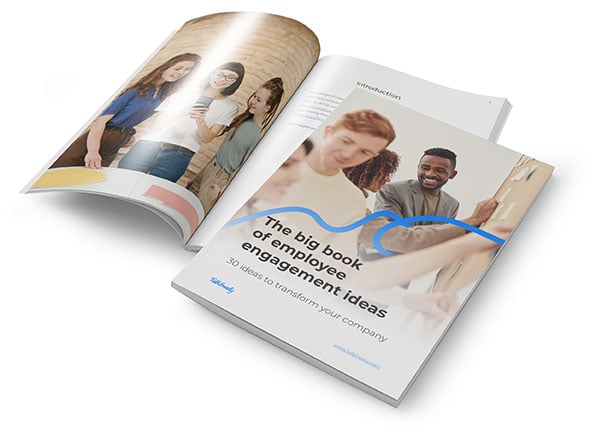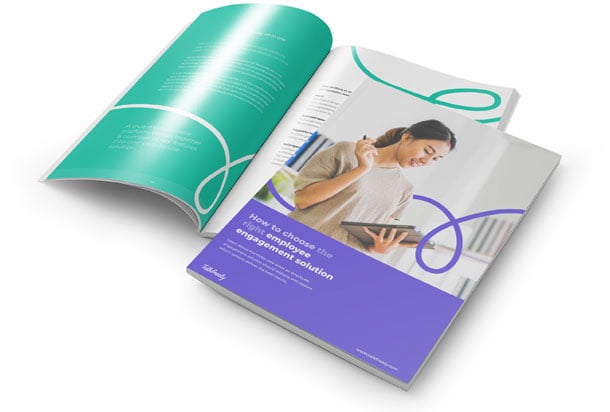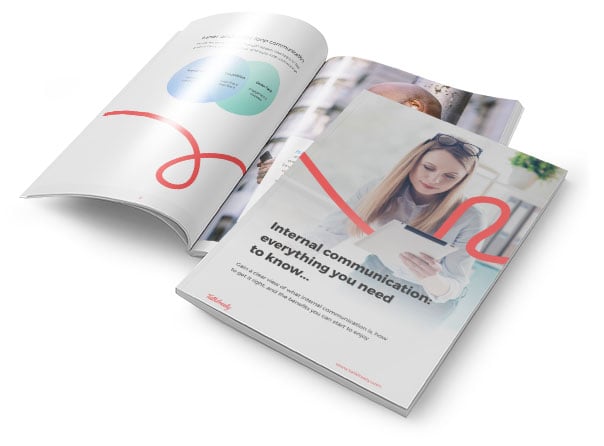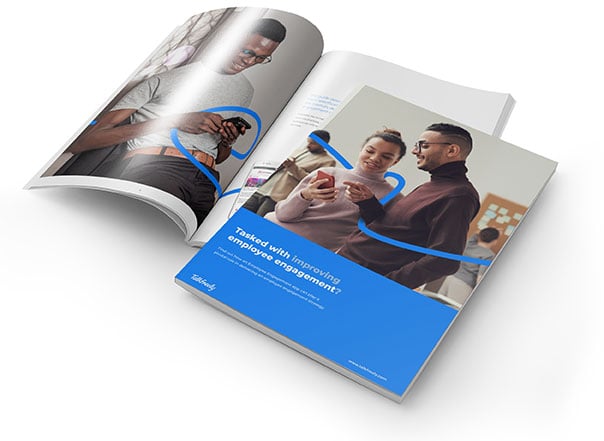It’s been one of the more unexpected outcomes of the pandemic. Suddenly the role of internal communications has taken centre stage. The need for robust internal communication systems is now endorsed as one of the key solutions to riding out the pandemic. Whereas once internal communications was relegated far down the priority list, it has now risen to prominence in the world of business. No longer just a tick-box exercise, employers are seeing the real value of an internal communications system that connects employees, both remote and office-based, and actively engages with them. After all, good communication is the thread that holds everyone and everything together.
However, the internal communication process is a complex one. So much more than just firing out news reports and memos to every member of staff; it’s a multifaceted, two-way conversation between you and your employees. In order to deliver genuinely effective internal communications that engage and connect, you’ll need to have the right system in place. That’s what we are covering in this blog today. We’ve pulled out the seven essential features of a great internal communication system to help you narrow down your search and pinpoint the best choice for your business.
Feature #1: Reaches every employee
What to look for: compatibility across multiple devices, single sign-in option
This feature is at the number one position for a reason. Unless your internal communication system reaches all your employees, even the elusive hard-to-reach ones, it’s never going to yield the results you’re hoping for. With workforces increasingly dispersed - some working from home, some office-based and some on flexible hours - you need to put reliable methods of internal communication in place. Your aim is to reach every single employee. And the right internal communications system can help you achieve this.
Effective internal communication software will make this complex task easily achievable. You’re looking for a system that is seamlessly compatible across all devices, from laptops and PCs to smartphones and tablets. Once you have software that is instantly accessible from any device an employee chooses to use, you’re halfway to cracking the problem. By opening up the internal communication channels to work on any device your employee prefers to work with, you’re breaking down barriers.
A single sign-in option will also improve accessibility with instant effect. A good employee app will integrate with your existing IT systems to give a single sign-in to all your existing online services; shifts, payroll, benefits, training. When employees have just one sign-in for everything and one password to remember, accessibility suddenly becomes simple.
Feature #2: Communicates instantly
What to look for: push notifications and instant messaging
If the pandemic has taught us anything, it’s the importance of being able to communicate instantly across your workforce. When a crisis hits, you need your internal communication tools to be ready to go without delay. This is particularly relevant for health and safety announcements.
Employees are asking for this level of communication. In the recent pandemic, 96% of those who felt their employers were effectively communicating the company’s response to coronavirus also believed their employers genuinely put their safety first. When the communication was poor, only 30% believed so (Perceptyx).
Look for an internal communications app that sends out push notifications and instant messaging at the click of a button. When your internal communications system is connected to all personal devices, you have the power to make instant contact with every employee. In a crisis, that could be a real game-changer.
Feature #3: Provides a central hub
What to look for: one easy-to-access location for information and resources
Many years ago, the employee intranet came into being and changed the way we look at gathering information. It provided a central area for all employee requirements, from news stories and project files to essential forms and policies. However, the problem with so many employee intranets is that they soon become out of date. And once they can no longer be relied upon as an up-to-date source of information, they quickly fall into disuse.
However, internal communication systems have moved on. Now, we have the powerful technology of internal communication software to make updates as seamless and effortless as possible. With the right system, you can create a central hub to gather all your information and resources together. Keep company news, emergency communications, surveys, forums and chat rooms all in one easy-to-access place.
An employee app is also good news for HR departments. By creating a self-service HR hub, you can give employees instant access to all those essential forms, policies, jobs and inductions. It cuts down on the department workload and opens up access channels - two birds with one stone.
Feature #4: Gives employees a voice
What to look for: two-way channels, feedback and innovation tools
The best internal communication systems allow employees to make themselves heard. All too often, internal comms is a one-way street, with management firing down directives from above. One of the critical internal communications best practices is the inclusion of a two-way communication channel.
Two-way channels are even more important in today’s business climate. With so many employees working away from the central hub of the office, there is a very real danger these remote workers feel they are no longer listened to by managers. It’s also essential that employees are given a chance to talk to each other too. In fact, peer to peer interaction is a crucial part of effective communication in the workplace.
The right employee app will make it simple to put these two-way channels in place. Look for an internal communication system that includes a variety of modules. Feedback modules will make it easy to conduct polls and surveys. Innovation modules will enable employees to put forward ideas and suggestions. Conversation modules offer a social space for staff to meet, chat, and share.
Feature #5: Covers a range of media
What to look for: multimedia options, newsfeeds, video, social tools
If you want to make an impact with your internal communications, it’s important to provide variety. Rely on email as your only medium, and you’ll start losing your audience. Instead, draw up an internal communication strategy that incorporates a range of media, including video, dynamic news and social elements.
Video is a great way to engage with remote employees. Keeping leaders visible in times of crisis and when communicating change, is a tried-and-tested route to success. Dynamic newsfeeds will resonate strongly with office-based and remote employees, while social tools help reconnect a dispersed workforce.
So how do you bring these multimedia elements together into one cohesive internal communications system? Robust internal communications software will deliver all this in one neat package. With all the channels working in unison, it makes it easy for employees to access these different media types, making it even easier for you to deliver them.
Feature #6: Includes analytical tools
What to look for: built-in reporting, dashboards, pulse data
When you’re aiming to improve internal communication, you need to know what works and what doesn’t. Without a thorough understanding of the impact of your communications, you’re effectively operating in the dark. It’s essential that your internal communication system allows you to continually evaluate engagement levels and adjust your strategy accordingly.
Tracking performance is a crucial element of business strategy, from sales teams meeting targets to IT departments delivering on resolutions. And internal communications should be no different. Measuring internal communications metrics is an essential element of any sound system.
Which analytical tools do you need to look for in your internal communication system? You want to be able to understand your audience by using dashboards to compare how teams and divisions interact. You want to be able to dig into the details with reporting that covers posts, modules and employee performance. And you want to keep track of loyalty levels by monitoring your eNPS (employee Net Promoter Score).
Feature #7: Easy to implement
What to look for: fast roll-out, minimal IT involvement, simple to use
Most organisations work at a fast pace and demand instant results. So you need to find an internal communication system that can be implemented quickly, with minimum disruption to operations. You’ll also want to deliver an instant uplift in engagement, company-wide.
The good news is that there is minimal setup involved when you choose the right internal communication app. For example, TalkFreely can offer fast-track implementation, with a launch schedule of under two weeks. You’ll be able to roll out your app, no IT resources needed, and see an immediate uptake across the whole company, remote and office-based employees alike.
Effective internal communication all begins with the right system. Put a robust internal communications system in place, and half the work is done for you. You’ll find it easy to reach out to employees, deliver varied, two-way communications and track how well you’re doing. And your employees will find it simple as well. With internal communications now accessible on their favourite device, with just one easy login to remember, suddenly it becomes so much easier to keep in touch with the company. Quite simply, choose the right system, and it will transform the way you work.
Topics:
Internal Communications









